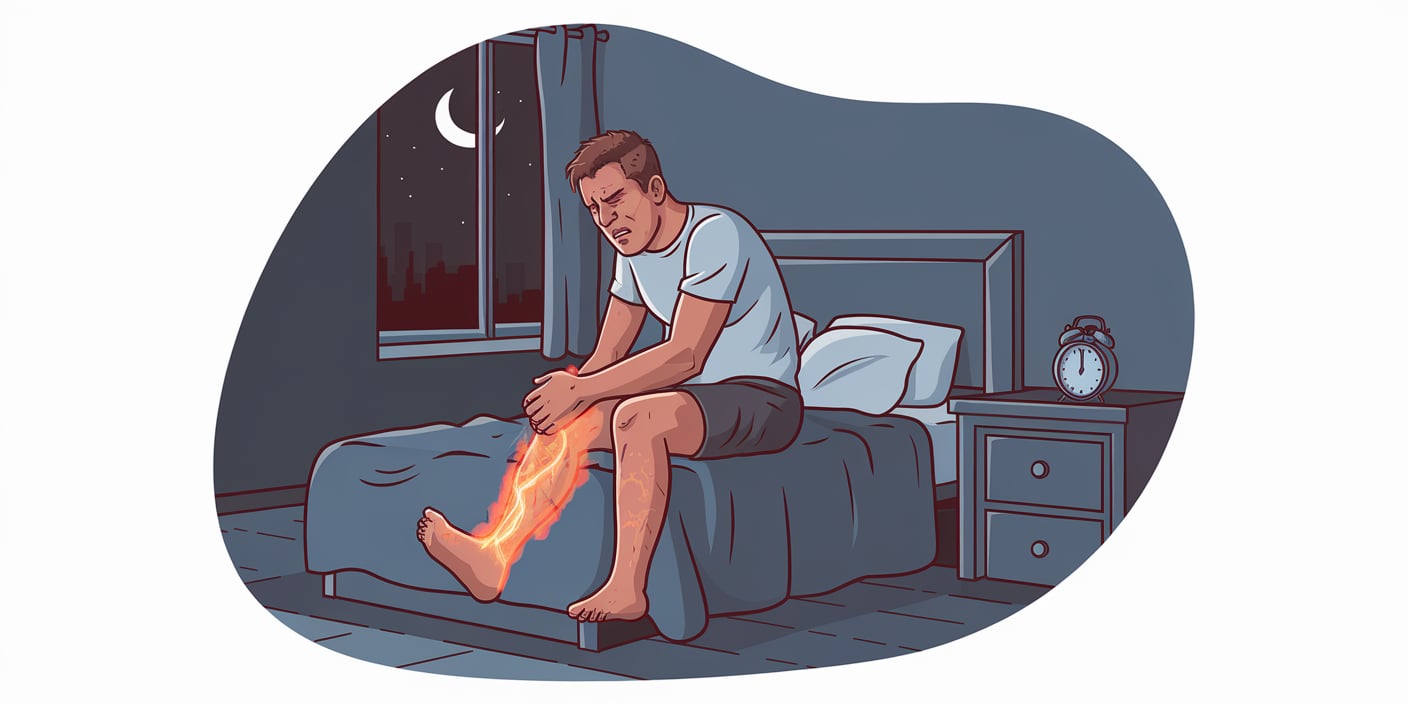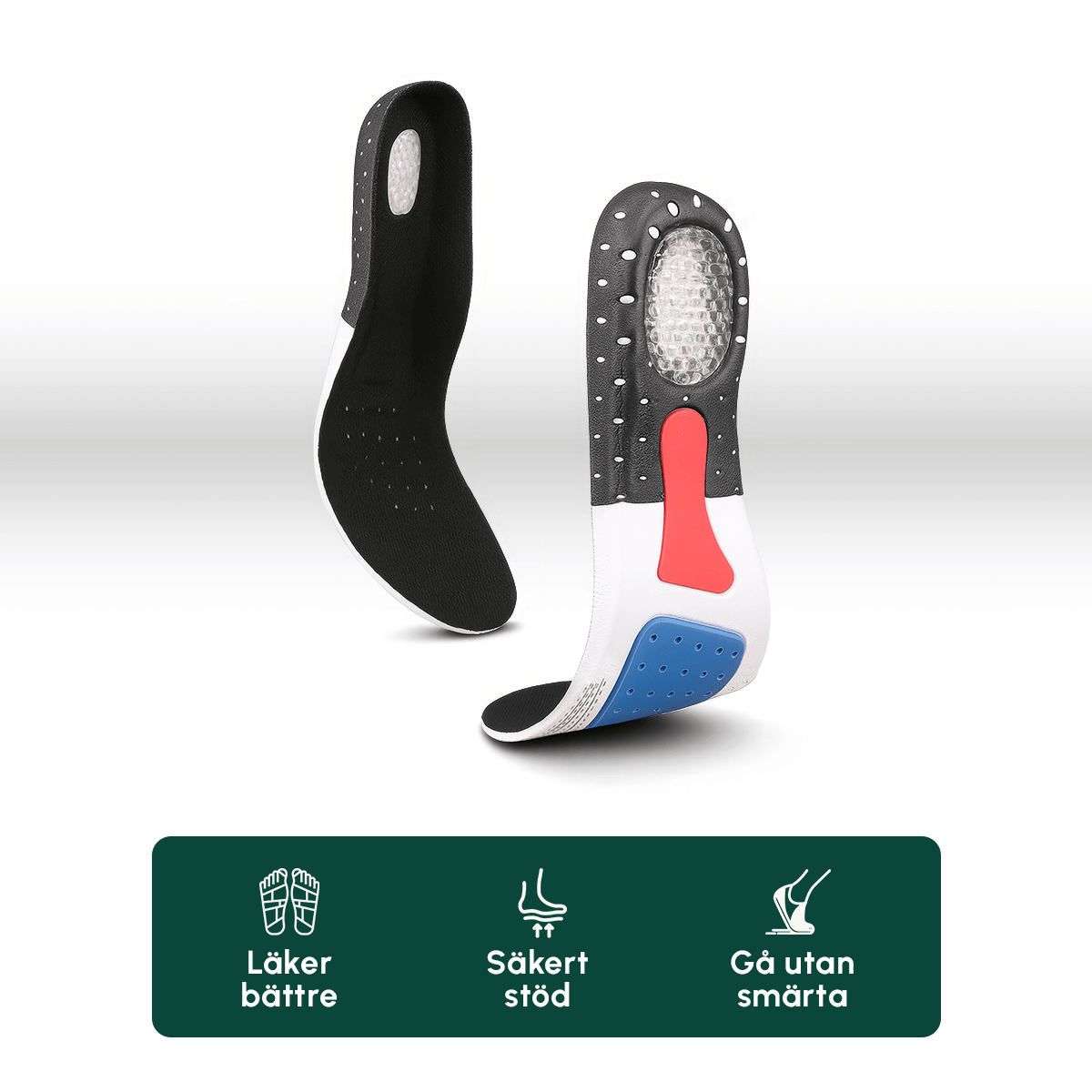Restless Legs Syndrome (RLS): Symptoms, Causes, and Treatment

Restless Legs Syndrome (RLS), also known as Willis-Ekbom disease or restless legs, is a neurological disorder characterized by an overwhelming urge to move the legs, often accompanied by unpleasant sensations. This condition, also abbreviated as WED (Willis-Ekbom disease), can significantly affect sleep quality and daily life, especially during the evening and nighttime.
What is Restless Legs Syndrome?
RLS is a condition in which people feel an irresistible urge to move their legs, often accompanied by unpleasant sensations in the legs. The condition was described as early as the 17th century by Thomas Willis, but it was not until the 1940s that Karl-Axel Ekbom described the syndrome in more detail, hence the name Willis-Ekbom disease.
RLS can be classified as primary or secondary. The primary form often has genetic causes and usually manifests earlier in life, while the secondary form may be due to another medical cause such as iron deficiency, pregnancy, or kidney disease. The International Restless Legs Syndrome Study Group has established criteria for diagnosis.
Symptoms of Restless Legs Syndrome
Common symptoms include:
- An irresistible urge to move the legs that worsens during rest or inactivity
- Unpleasant sensations such as tingling, burning, itching, or crawling sensations in the legs
- Symptoms worsen during rest, especially in the evening and night, often 2 hours before bedtime
- Relieved partially or completely by movement, such as walking or stretching, at least for as long as the activity continues
- Difficulty falling asleep or staying asleep through the night due to discomfort in the legs
- Daytime fatigue as a result of disturbed nighttime sleep
- Symptoms can also occur in other sedentary situations, such as during long meetings or long trips.
Many people with RLS also experience so-called "periodic limb movements" (PLM) during sleep, involuntary twitching of the legs that further disrupt sleep quality. The above symptoms can vary in intensity and may occur intermittently or be constant in some patients.
Tingling in the feet is a related symptom that some people with RLS also experience.
Causes of Restless Legs Syndrome
The exact cause of RLS is often unknown, but several factors may contribute:
- Genetic predisposition, especially in the primary form which may occur earlier in the day
- Dopamine imbalance in the brain, which affects the central nervous system (CNS)
- Iron deficiency, with low ferritin levels in the blood - studies show that people with RLS have higher levels of iron in cerebrospinal fluid than people without RLS with corresponding blood levels
- Chronic conditions such as kidney disease, diabetes, or arthritis
- Pregnancy, especially in the last months - women are generally 2 times more likely to develop RLS later in life
- Certain medications, such as antihistamines or some antidepressants
There are also theories that RLS is due to impaired microcirculation in the legs, which would explain why the symptoms are relieved by movement.
Diagnosis and treatment of Restless Legs Syndrome (RLS)
Restless Legs Syndrome (RLS) is a condition characterized by unpleasant tingling, prickling, or crawling sensations in the legs, often in the evening or during rest. The symptoms are temporarily relieved by movement. Treatment depends on the cause and severity, but always aims to improve sleep, circulation, and comfort in the legs.
Clinical assessment
A thorough review of the patient's symptoms and sleep patterns is performed by a physician.
Lifestyle changes such as regular exercise, warm baths, and stretching can reduce symptoms.
SkoKomforts™ improves foot position and can help reduce tension in the lower legs during rest.
Blood test
Blood tests are used to detect iron deficiency or imbalances in neurotransmitters such as dopamine.
If necessary, dopamine agonists or iron supplements may be prescribed.
SkoKomforts™ increases comfort during everyday activities and supports good circulation in the legs.
Sleep study
If disturbed sleep is suspected, a sleep study is performed to confirm RLS and rule out other conditions.
Iron supplements may be given if levels are low.
SkoKomforts™ helps distribute weight more evenly and reduce nighttime leg movements.
Neurological examination
In more complex or long-term cases, non-drug therapies such as relaxation, massage, or compression therapy are used.
SkoKomforts™ can provide natural, non-invasive relief from RLS symptoms thanks to improved foot posture and blood circulation.

How Shoe Comfort™ can help with Restless Legs Syndrome
Although SkoKomforten™ is not a direct treatment for RLS, these advanced orthoses may provide relief for some people with RLS symptoms:
- Improved foot positioning and support can reduce leg discomfort by correcting misalignments
- Increased comfort during daily activities, which can potentially relieve RLS symptoms by improving blood circulation
- Improved weight distribution, which can relieve pressure points that can trigger RLS sensations
- Can especially help with problems that are aggravated by prolonged standing or walking
- Can be supplemented with intensive physical exercise which also relieves symptoms in many people
SkoKomforten™ may be particularly helpful for people whose RLS is exacerbated by other foot problems or circulatory disorders in the lower extremities.
Buy nowConclusions
Restless Legs Syndrome can be a challenging condition, but with the right treatment, most patients can achieve significant symptom relief. Treatment should be individualized and may need to be adjusted over time, especially if augmentation develops.
SkoKomforts™ are not a substitute for medical treatment, but can contribute to general comfort and possibly provide some relief for people with RLS. For many, a combination of medication, lifestyle changes and assistive devices is required for optimal symptom relief.
It is important to consult a doctor, preferably a neurologist with knowledge of this neurological disease, for a correct diagnosis and treatment plan. For many, follow-up for at least 12 weeks is required to evaluate the treatment effect.
Frequently Asked Questions (FAQ)
Is Restless Legs Syndrome a serious condition?
Although not life-threatening, RLS can significantly impact quality of life through sleep disturbances and daily discomfort. Chronic sleep deprivation can lead to other health problems such as depression, anxiety, and cardiovascular disease.
Can Restless Legs Syndrome be cured?
There is no known cure for the primary form, but symptoms can often be effectively managed with the right treatment. In secondary RLS, treating the underlying cause can sometimes lead to complete resolution of symptoms.
How can SkoKomforts™ orthoses help with RLS?
They can provide comfort and improve foot position, which may indirectly help relieve some RLS symptoms. They are especially useful for people who stand and walk a lot during the day, where fatigue and strain can worsen RLS symptoms at night.
Is Restless Legs Syndrome only a problem at night?
Symptoms are often worse at night, but can also occur during the day, especially during periods of inactivity such as long trips or sitting at a desk. In more severe cases, symptoms can occur almost constantly.
When should I contact a doctor for RLS symptoms?
Contact your doctor if RLS symptoms significantly interfere with your sleep or daily functioning. If you are already diagnosed and notice that your treatment is losing effectiveness or if you develop new symptoms, you should also contact your doctor to discuss possible augmentation or the need for treatment adjustment.

